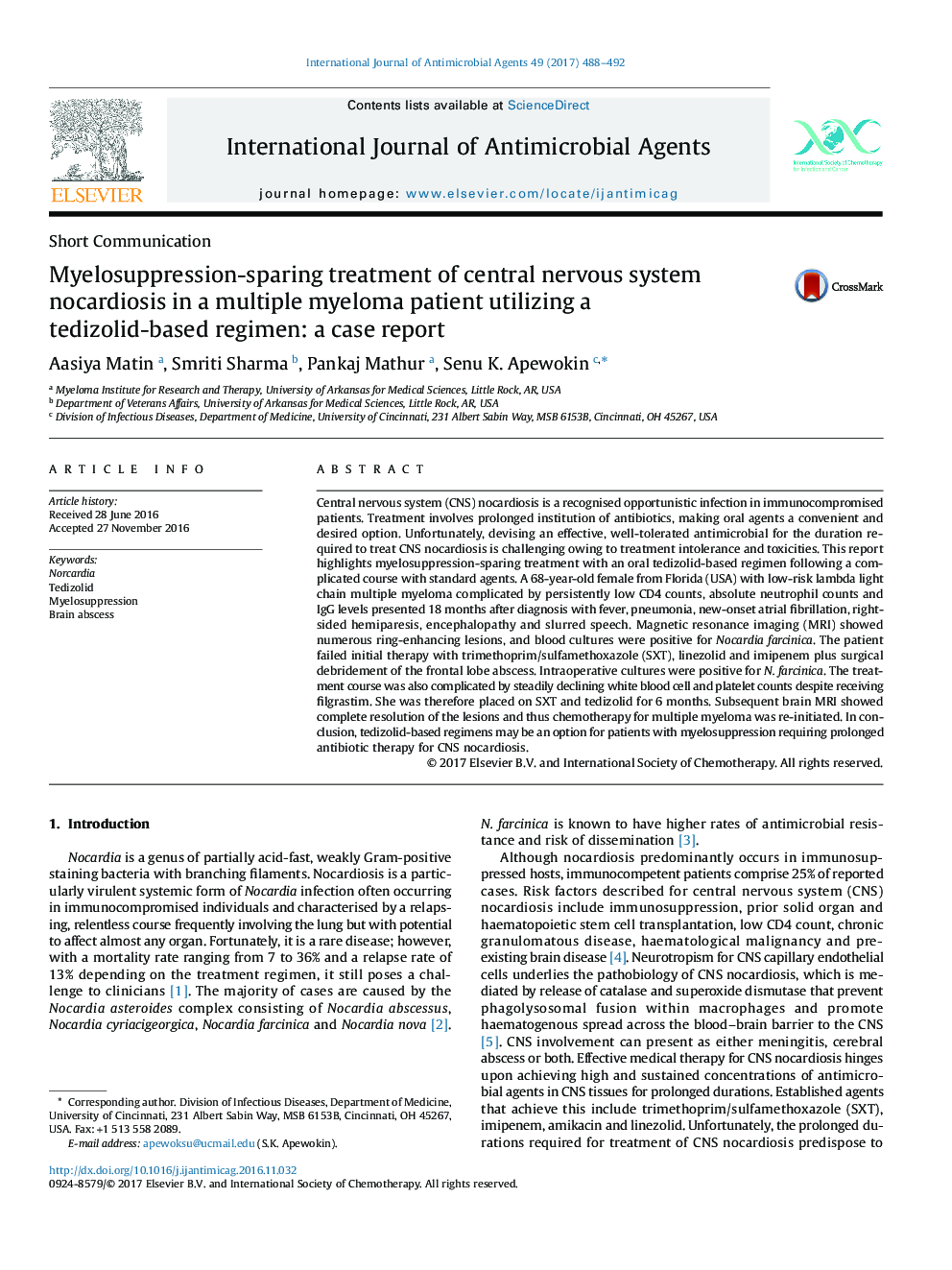| کد مقاله | کد نشریه | سال انتشار | مقاله انگلیسی | نسخه تمام متن |
|---|---|---|---|---|
| 5666834 | 1591744 | 2017 | 5 صفحه PDF | دانلود رایگان |
- Prolonged oral tedizolid therapy was well tolerated.
- Concurrent administration of tedizolid with chemotherapeutics for multiple myeloma was safe and effective.
- Tedizolid may be a treatment option for infections where there is concern about myelosuppression.
Central nervous system (CNS) nocardiosis is a recognised opportunistic infection in immunocompromised patients. Treatment involves prolonged institution of antibiotics, making oral agents a convenient and desired option. Unfortunately, devising an effective, well-tolerated antimicrobial for the duration required to treat CNS nocardiosis is challenging owing to treatment intolerance and toxicities. This report highlights myelosuppression-sparing treatment with an oral tedizolid-based regimen following a complicated course with standard agents. A 68-year-old female from Florida (USA) with low-risk lambda light chain multiple myeloma complicated by persistently low CD4 counts, absolute neutrophil counts and IgG levels presented 18 months after diagnosis with fever, pneumonia, new-onset atrial fibrillation, right-sided hemiparesis, encephalopathy and slurred speech. Magnetic resonance imaging (MRI) showed numerous ring-enhancing lesions, and blood cultures were positive for Nocardia farcinica. The patient failed initial therapy with trimethoprim/sulfamethoxazole (SXT), linezolid and imipenem plus surgical debridement of the frontal lobe abscess. Intraoperative cultures were positive for N. farcinica. The treatment course was also complicated by steadily declining white blood cell and platelet counts despite receiving filgrastim. She was therefore placed on SXT and tedizolid for 6 months. Subsequent brain MRI showed complete resolution of the lesions and thus chemotherapy for multiple myeloma was re-initiated. In conclusion, tedizolid-based regimens may be an option for patients with myelosuppression requiring prolonged antibiotic therapy for CNS nocardiosis.
Journal: International Journal of Antimicrobial Agents - Volume 49, Issue 4, April 2017, Pages 488-492
